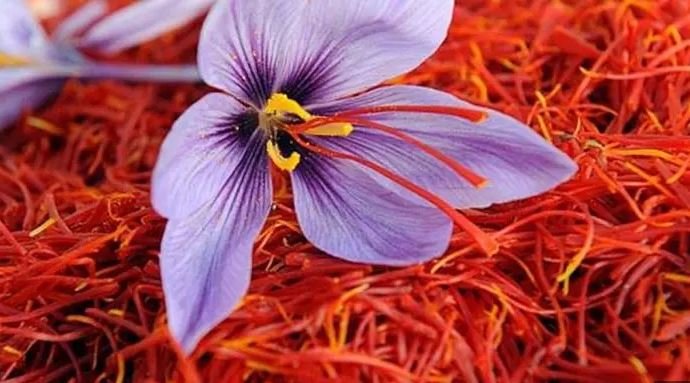Climate change has created a serious crisis for Kashmir’s saffron industry, which is well-known worldwide for its exceptional quality and cultural significance. This exquisite spice has been cultivated for centuries and represents not just a vital economic resource but also a deep-rooted heritage for the region. However, rising temperatures, diminishing snowfall, and unpredictable rainfall patterns are putting this cherished agricultural practice at risk, threatening the livelihoods of farmers and the rich cultural legacy associated with saffron production.
Traditionally, saffron cultivation in Kashmir thrived within a unique climatic framework characterized by distinct seasonal variations and fertile soil. Farmers relied on ancestral knowledge, which ensured successful harvests of this aromatic spice. Yet, the impacts of climate change have disrupted this delicate balance, with erratic weather leading to unpredictable flowering and harvesting periods. This unpredictability not only affects the quantity of saffron produced but also compromises its quality, leaving farmers vulnerable to financial losses and uncertain futures. As global temperatures rise, the flowering of the saffron crocus—typically occurring in October—is increasingly at risk. Fluctuations in temperature and precipitation patterns can cause adverse effects on both the quantity and quality of the harvest. Farmers are experiencing significant losses when their crops fail to meet market standards, exacerbating the economic pressures they face. Additionally, the decline in snowfall during winter has serious implications for saffron cultivation. Snow serves as a protective layer for saffron bulbs, shielding them from extreme cold. When snowfall is insufficient, these bulbs are exposed to harsh conditions, negatively affecting their growth in the following season. The specific soil conditions required for saffron, including optimal moisture levels, are also disrupted by insufficient snow, further threatening plant health and, consequently, the quality of the saffron produced. Erratic rainfall patterns compound these challenges. Farmers depend on timely rainfall to nurture their crops, but climate change has led to unpredictable precipitation events—heavy downpours can wash away delicate plants, while prolonged dry spells can leave crops drought-stricken. This uncertainty complicates farmers’ decisions about planting and irrigation, further destabilizing production. The saffron yield, which once reached nearly 17 tons annually, has recently stabilized at around 15 tons, with declines expected. The economic ramifications of these declines are profound, affecting not just individual farmers but the broader community as well. Saffron is more than just a cash crop; it provides a livelihood for many families in Kashmir, supporting local economies. As production wanes, economic opportunities shrink, forcing many farmers to seek alternative sources of income or abandon saffron farming altogether. This shift threatens not only their livelihoods but also the social fabric of rural Kashmir. Despite these challenges, global demand for saffron remains high, with India’s demand hovering around 50 tons annually. However, local production lags significantly, putting additional pressure on farmers competing for a limited market. This gap drives down prices, pushing farmers to compromise on quality or cut costs, which further erodes traditional farming practices and endangers the esteemed reputation of Kashmiri saffron. The impacts of climate change are challenging to mitigate, and farmers continue to grapple with unpredictable weather patterns. While technological advancements and research can aid adaptation, it is crucial to recognize the emotional and cultural connections that farmers have to saffron cultivation. For many, farming saffron is more than a means of income; it is a tradition that links them to their ancestors and the land they cherish. The potential loss of this cultural legacy due to environmental changes weighs heavily on these communities. The situation faced by Kashmir’s saffron farmers reflects a broader struggle against climate change, emphasizing the urgent need for action. Protecting the saffron industry involves not only ensuring economic stability but also safeguarding the cultural identity that has flourished for generations. Collective efforts are essential in addressing these challenges. Policymakers, researchers, and community leaders must work together to develop sustainable solutions that empower saffron farmers to confront the impacts of climate change. This collaboration should involve investments in research, financial support, and educational initiatives that enhance farmers’ resilience. By fostering a united approach, the region can strive to preserve its saffron heritage while securing a sustainable future.
As such, the fight to protect Kashmir’s saffron industry is emblematic of a critical battle against climate change. As global temperatures rise and weather patterns become increasingly erratic, the urgency for immediate action is paramount. By prioritizing the needs of saffron farmers and acknowledging the intrinsic value of their cultural legacy, there is hope for a future where the golden harvest of Kashmir can thrive, symbolizing the resilience and spirit of its people. As we confront the challenges posed by climate change, it is vital to recognize that safeguarding cultural legacies is just as important as protecting agricultural practices, for both are interwoven into the fabric of human experience.
#Saffron #Kashmir #ClimateChange #SaffronFarming #KashmirHeritage #SaffronProduction #SustainableAgriculture #ProtectSaffron #KashmirAgriculture #EcoFriendlyFarming #SaffronCrisis #FarmersInKashmir #KashmirEconomy #CulturalHeritage #ClimateAction




